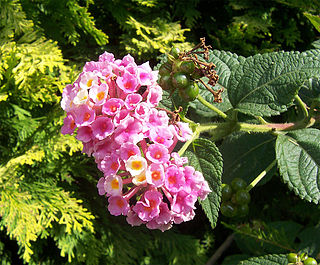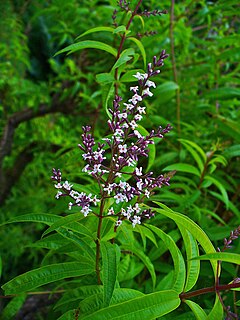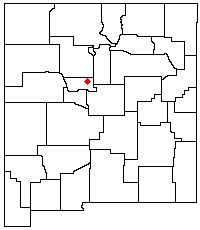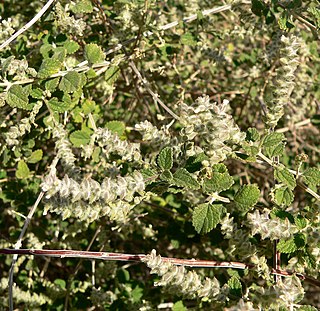
The Verbenaceae are a family — the verbena family or vervain family — of mainly tropical flowering plants. It contains trees, shrubs, and herbs notable for heads, spikes, or clusters of small flowers, many of which have an aromatic smell.

Aloysia citrodora, lemon verbena, is a species of flowering plant in the verbena family Verbenaceae, native to South America. Other common names include lemon beebrush. It was brought to Europe by the Spanish and the Portuguese in the 17th century and cultivated for its oil.

Verbena is a genus in the family Verbenaceae. It contains about 250 species of annual and perennial herbaceous or semi-woody flowering plants. The majority of the species are native to the Americas and Asia. Verbena officinalis, the common vervain or common verbena, is the type species and native to Europe.

Maria Aloysia Antonia Weber Lange was a German soprano, remembered primarily for her association with the composer Wolfgang Amadeus Mozart.

Argythamnia is a genus of plants of the family Euphorbiaceae first described as a genus in 1756. They are known commonly as silverbushes.

Maria Constanze Cäcilia Josepha Johanna Aloysia Mozart was a trained Austrian singer. She married twice. Her first husband was Wolfgang Amadeus Mozart; her second husband was Georg Nikolaus von Nissen. She and Mozart had six children: Karl Thomas Mozart, Franz Xaver Wolfgang Mozart, and four others who died in infancy. She became Mozart's biographer jointly with her second husband.

The Sandia–Manzano Mountains are a substantial mountain area that defines the eastern edge of the middle Rio Grande valley of central New Mexico. They are not only an attractive backdrop to greater Albuquerque, the largest metropolitan area in New Mexico, but their elevation changes provide recreational opportunities including winter skiing and cool summer hiking or picnicing, as compared to the desert grasslands, foothills, and valley below. The entire mountain chain comprises three parts, arranged north to south: the Sandia Mountains, the Manzanita Mountains, and the Manzano Mountains. The Manzanita Mountains are a series of low-lying foothills that separate the Sandias from the Manzanos.

[[File:|thumb|right|]]

Lippia is a genus of flowering plants in the verbena family, Verbenaceae. It was named after Augustus Lippi, (1678-1705), a French naturalist and botanist. He was killed in Abyssinia. The genus contains roughly 200 species of tropical shrubs that are found around the world. Plants are fragrant due to their essential oils, which vary between species but may include estragole, carvacrol, linalool, or limonene. The leaves of certain species, such as L. graveolens, can be used as a culinary herb similar to oregano.
Aloysia dodsoniorum is a species of flowering plant in the verbena family, Verbenaceae, that is endemic to Ecuador. Its natural habitat is tropical dry forests.

Aloysia is a genus of flowering plants in the verbena family, Verbenaceae. They are known generally as beebrushes. They are native to the Americas, where they are distributed in temperate climates, as well as in subtropical and desert climates. The genus is named for Maria Luisa of Parma (1751-1819), wife of King Charles IV of Spain.

Joseph Lange was an actor and amateur painter of the 18th century. Through his marriage to Aloysia Weber, he was the brother-in-law of Wolfgang Amadeus Mozart.

Maria Sophie Weber (1763–1846) was a singer of the 18th and 19th centuries. She was the younger sister of Wolfgang Amadeus Mozart's wife, Constanze, and is remembered primarily for the testimony she left concerning the life and death of her brother-in-law.

Aloysia wrightii is a species of flowering plant in the verbena family known by the common names Wright's beebrush and oreganillo. It is native to the Sonoran Desert of southwestern United States and northern Mexico, where it can be found in moist desert canyons, scrub, and woodland habitat. This is a thickly branching shrub which reaches nearly two meters in maximum height and is generally rounded in form. It has small, oval-shaped to nearly round leaves each no more than two centimeters long. The leaves have lightly toothed edges and hairy undersides. The inflorescence is a narrow, woolly spike up to 6 centimeters long, with small, widely spaced white flowers. It is a valuable nectar source for native solitary bees. It is also larval and adult food plant for the rustic sphinx moth (Manduca rustica).

Cäcilia Cordula Stamm was the mother of Constanze Weber and the mother-in-law of Wolfgang Amadeus Mozart.

Mozart, l'opéra rock is a French musical with music by Dove Attia, Jean-Pierre Pilot, Olivier Schultheis, William Rousseau, Nicolas Luciani, Rodrigue Janois and François Castello, lyrics by Vincent Baguian and Patrice Guirao and a book by Attia and François Chouquet. The show is a dramatization of the life of Wolfgang Amadeus Mozart beginning from the age of 17 and culminating with his death in 1791 at the age of 35. It uses both original pop-rock compositions as well as pre-existing music composed by Mozart and other composers, including Antonio Salieri.
Aloysia fiebrigii is a species in the genus Aloysia in the family Verbenaceae. It is native to high elevation in the Andes of Bolivia.
Pomacea catamarcensis is a South American species of freshwater snail with gills and an operculum, an aquatic gastropod mollusc in the family Ampullariidae, the apple snails.
Aloysia is a genus of flowering plants. It is also a feminine given name that may refer to the following people

Aloysia virgata, known as sweet almond verbena and sweet almond bush, is a perennial plant in the family Verbenaceae native to Argentina. It grows from Central Argentina up to Brazil and Peru, with multiple instances in Yucatán, Southeastern United States, and Texas.















